Odds of 'Lost Tomb' Being Jesus' Family Rest on Assumptions
By CARL BIALIK
THE NUMBERS GUY
http://online.wsj.com/public/article/SB117338464249431351-0ghR_0Jef5ubo6ZLbYIVoePRxrA_20070408.html?mod=tff_main_tff_top
Until two weeks ago, University of Toronto statistician Andrey Feuerverger's body of research encompassed uncontroversial topics such as medical scanning and correcting for camera blurring.
So he was unprepared for the reaction to his work for the Discovery Channel documentary "The Lost Tomb of Jesus," which aired on Sunday. The tomb is a set of 10 limestone coffins, or ossuaries, found in Jerusalem in 1980, bearing the names Yeshua bar Yosef (Jesus, son of Joseph), Maria (Mary), Matia (Matthew), Yose (a nickname for Joseph), Mariamene e Mara (a form of Mary) and Yehuda bar Yeshua (Judah, son of Jesus). Prof. Feuerverger calculated there is just a one-in-600 chance that those same names would have come together in a family that didn't belong to Jesus of Nazareth.
That calculation helped propel the already explosive story. "It was really the thing that began to convince us all to give this more attention," says James Tabor, chair of religious studies at the University of North Carolina, Charlotte, who advised the filmmakers and Prof. Feuerverger, and appears in the two-hour documentary.
But the one-in-600 calculation is based on many assumptions about the prevalence of the names and their biblical significance. For purposes of his calculations, Prof. Feuerverger relied on new scholarly research that links the inscription "Mariamene e Mara" with a name for Mary Magdalene. (The filmmakers suggest that she was Christ's wife and that they are buried with a son, Judah -- claims hotly denounced by traditional Christians.)
Had the professor assumed the inscription could be for any Mary, a very common name then, it would be far less likely that Christ's family is in the tomb. The mathematical finding would become "statistically not significant," Prof. Feuerverger tells me. Similarly, the name "Yose" -- as one of Jesus' four brothers was called in the Gospel of Mark -- is a derivative of Yosef, another common name. There, too, the finding would be less conclusive if the professor had considered "Yose" applicable to any Yosef.
Even if there was consensus on the interpretation of the names, there are no comprehensive records showing how frequently they occurred in the population at that time. Prof. Feuerverger relied on modern books about ossuaries and ancient texts to tally the occurrence of certain names in the area then. That falls far short of a complete census.
"As you pile on more assumptions, you're building a house of cards," says Keith Devlin, a Stanford mathematician and NPR's "Math Guy." (Scientific American also challenged the calculation on its Web site.)
No one is questioning Prof. Feuerverger's statistical credentials, or his calculation given the assumptions made. For each of the names believed to be appropriate for Jesus or an associate, Prof. Feuerverger calculated the probability it would arise by chance, then adjusted for other factors, such as the number of tombs in Jerusalem. But his conclusion is only as reliable as the assumptions that went into it.
"I wouldn't be comfortable coming up with a number like this, because the general audience will not understand that it is very, very subjective," says Ivo Dinov, assistant professor of statistics at the University of California, Los Angeles.
The case is far from closed on this tomb. Prof. Feuerverger, who says he was paid a "nominal" sum for his work, had signed a nondisclosure agreement with Associated Producers, barring him from describing the project and so limiting his ability to run his work by his peers. He still hasn't provided full documentation of his calculation, saying he'd wait until his paper, not yet completed, is accepted by a journal. "There is a mismatch between how the media works and how academia works," Prof. Feuerverger says. "Obviously it would have been a whole lot better if I had completed the paper" before the documentary aired.
Writer-director Simcha Jacobovici says he went to great lengths to find a responsible number. Initial, "ballpark" calculations based on the incidence of the names -- including one made by Charles Pellegrino, co-author of the documentary's companion book -- found even smaller probabilities that the tomb wasn't that of Jesus' family. Mr. Jacobovici then turned to the University of Toronto, down the street from his production offices, and tapped Prof. Feuerverger to do the calculations with greater rigor. "We told him Charlie came out with 2.4 million to 1," Mr. Jacobovici says. "He said, the numbers will come out where the numbers come out."
All this has brought some measure of distress to Prof. Feuerverger, who nevertheless says he thinks the experience will strengthen him as a human being, and as a statistician. "When I was doing the calculation, I was naively unaware of the extent to which the filmmakers might be depending on the ultimate result of it," he says. "I did carry out the calculation in every good faith. I hoped it would be interpreted in that light."

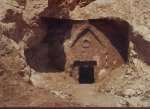
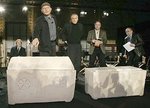






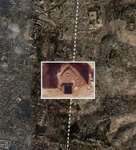


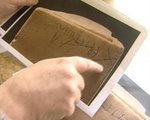






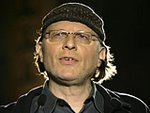

















No comments:
Post a Comment